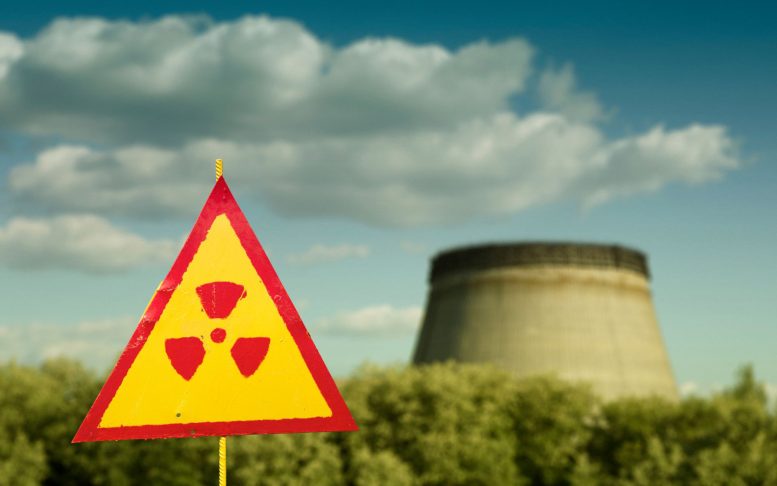
The 1986 Chornobyl disaster created a highly radioactive environment, yet recent research by NYU scientists reveals that nematodes in the region show no genomic damage from chronic radiation, suggesting their remarkable resilience. While some animals in the Chornobyl Exclusion Zone exhibit physical and genetic differences, this study emphasizes the complexity of understanding radiation’s effects on local wildlife and raises questions about natural resistance to ionizing radiation.
Studying animals resistant to DNA damage could offer insights into human vulnerability factors.
The catastrophic event at the Chornobyl nuclear power plant in 1986, also known as Chernobyl, rendered the vicinity the most radiated environment globally. While human inhabitants were removed, a diverse array of flora and fauna has managed to thrive in the area, enduring the significant radiation levels that have remained for almost forty years.
A new study led by researchers at New York University finds that exposure to chronic radiation from Chornobyl has not damaged the genomes of microscopic worms living there today—which doesn’t mean that the region is safe, the scientists caution, but suggests that these worms are exceptionally resilient.
In recent years, researchers have found that some animals living in the Chornobyl Exclusion Zone—the region in northern Ukraine within an 18.6-mile radius of the power plant—are physically and genetically different from their counterparts elsewhere, raising questions about the impact of chronic radiation on DNA.
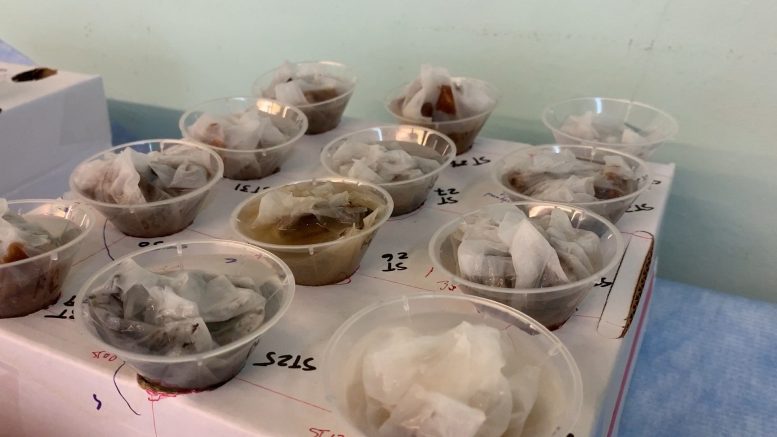
The researchers wrapped each sample of soil or other organic matter in tissue and submerged the funnel under water. Over a period of ~12 hours, the nematodes migrate through the tissue and to the bottom of the funnel. Credit: Sophia Tintori
“Chornobyl was a tragedy of incomprehensible scale, but we still don’t have a great grasp on the effects of the disaster on local populations,” said Sophia Tintori, a postdoctoral associate in the Department of Biology at NYU and the first author of the study, published in the Proceedings of the National Academy of Sciences (PNAS). “Did the sudden environmental shift select for species, or even individuals within a species, that are naturally more resistant to ionizing radiation?”
To dig into this, Tintori and her colleagues turned to nematodes, tiny worms with simple genomes and rapid reproduction, which makes them particularly useful for understanding basic biological phenomena.
“These worms live everywhere, and they live quickly, so they go through dozens of generations of evolution while a typical vertebrate is still putting on its shoes,” said Matthew Rockman, a professor of biology at NYU and the study’s senior author.
“I had seen footage of the exclusion zone and was surprised by how lush and overgrown it looked—I’d never thought of it as teeming with life,” added Tintori. “If I want to find worms that are particularly tolerant to radiation exposure, this is a landscape that might have already selected for that.”
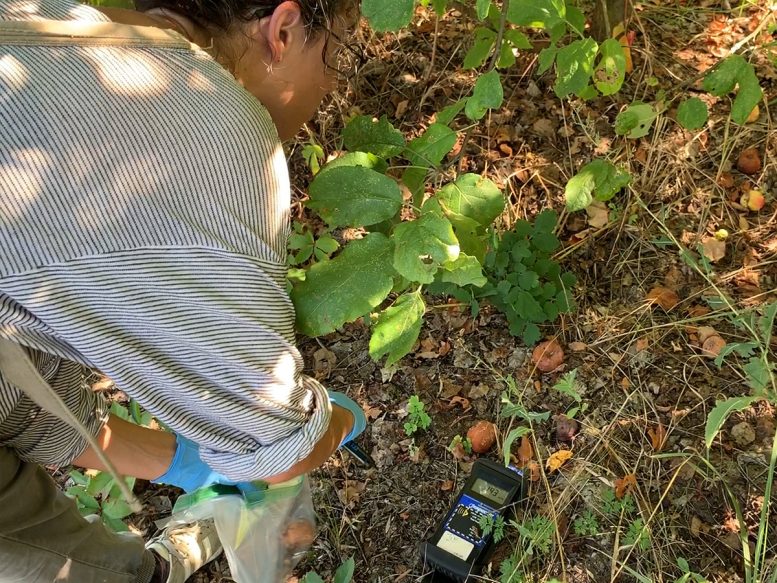
NYU researcher Sophia Tintori measures the radiation in the Chornobyl exclusion zone, where the researchers gathered worms from organic matter including rotting fruit. Credit: Matthew Rockman
The worms of Chornobyl
In collaboration with scientists in Ukraine and U.S. colleagues—including biologist Timothy Mousseau of the University of South Carolina, who studies the effects of radiation from the Chornobyl and Fukushima disasters—Tintori and Rockman visited the Chornobyl Exclusion Zone in 2019 to see if chronic radiation has had a detectable impact on the region’s worms.
With Geiger counters in hand to measure local levels of radiation and personal protective gear to guard against radioactive dust, they gathered worms from samples of soil, rotting fruit, and other organic material. Worms were collected from locations throughout the zone with different amounts of radiation, ranging from low levels on par with New York City (negligibly radioactive) to high-radiation sites on par with outer space (dangerous for humans, but of unclear if it would be dangerous to worms).
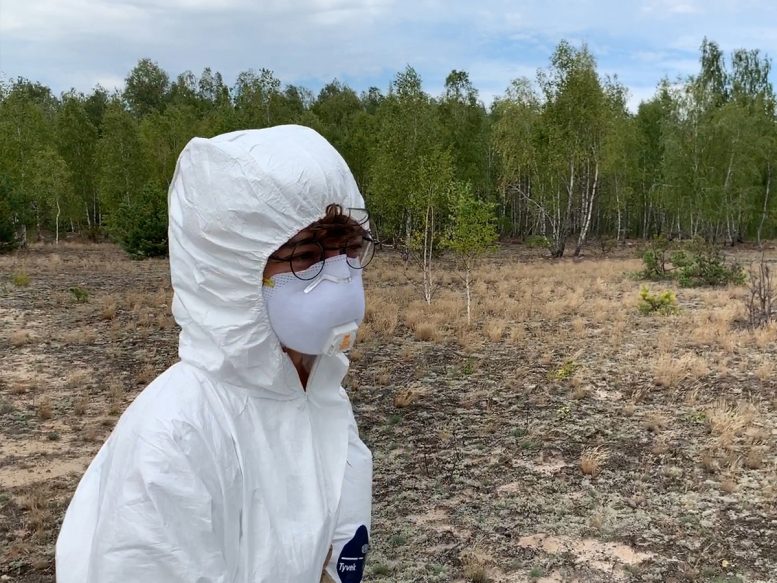
NYU researcher Sophia Tintori in the Chornobyl exclusion zone wearing personal protective equipment to safeguard against radioactive dust and debris. Credit: Matthew Rockman
After collecting samples in the field, the team brought them to Mousseau’s field lab in a former residential home in Chornobyl, where they separated hundreds of nematodes from the soil or fruit. From there, they headed to a Kyiv hotel where, using travel microscopes, they isolated and established cultures from each worm.
Back in the lab at NYU, the researchers continued studying the worms—part of which involved freezing them.
“We can cryopreserve worms, and then thaw them for study later. That means that we can stop evolution from happening in the lab, something impossible with most other animal models, and very valuable when we want to compare animals that have experienced different evolutionary histories,” said Rockman.
They focused their analyses on 15 worms of a nematode species called Oscheius tipulae, which has been used in genetic and evolutionary studies. They sequenced the genomes of the 15 O. tipulae worms from Chornobyl and compared them with the genomes of five O. tipulae from other parts of the world.
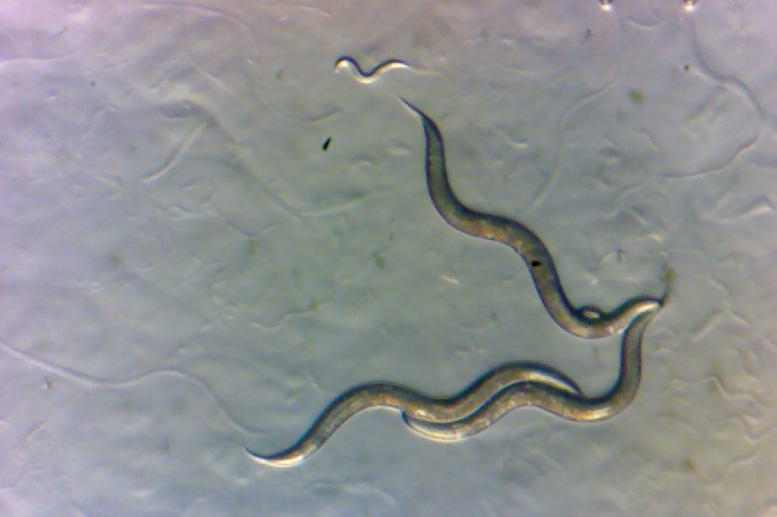
Worms collected in the Chernobyl Exclusion Zone, as seen under a microscope. Credit: Sophia Tintori
Different DNA—but not due to radiation
The researchers were surprised to find that, using several different analyses, they could not detect a signature of radiation damage on the genomes of the worms from Chernobyl.
“This doesn’t mean that Chernobyl is safe—it more likely means that nematodes are really resilient animals and can withstand extreme conditions,” noted Tintori. “We also don’t know how long each of the worms we collected was in the Zone, so we can’t be sure exactly what level of exposure each worm and its ancestors received over the past four decades.”
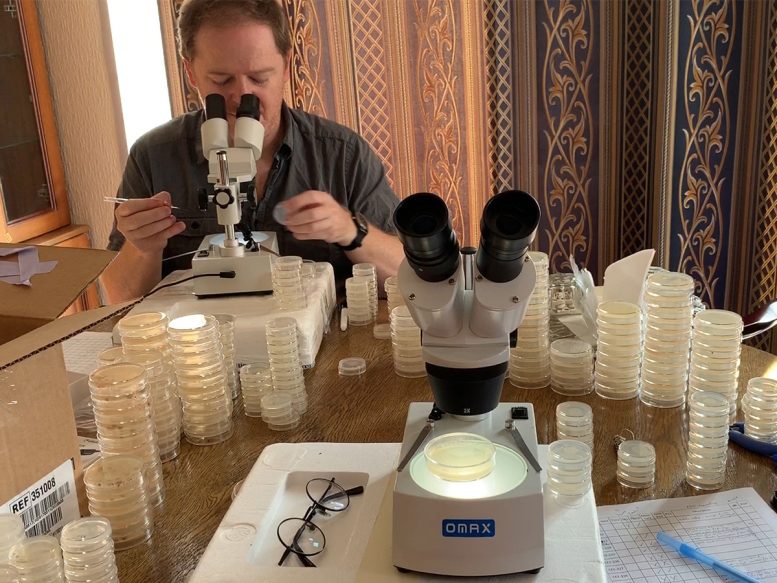
Matthew Rockman, NYU professor of biology, looks at nematodes under a microscope in a makeshift lab in a Kyiv hotel. Credit: Sophia Tintori
Wondering whether the lack of genetic signature was because the worms living in Chernobyl are unusually effective at protecting or repairing their DNA, the researchers designed a system to compare how quickly populations of worms grow and used it to measure how sensitive the descendants of each of the 20 genetically distinct worms were to different types of DNA damage.
While the lineages of worms were different from each other in how well they tolerated DNA damage, these differences didn’t correspond to the levels of radiation at each collection site. Their findings suggest that worms from Chernobyl are not necessarily more tolerant of radiation and the radioactive landscape has not forced them to evolve.
What worms can teach us about our own biology
The results give researchers clues into how DNA repair can vary from individual to individual—and despite the genetic simplicity of O. tipulae, could lead to a better understanding of natural variation in humans.
“Now that we know which strains of O. tipulae are more sensitive or more tolerant to DNA damage, we can use these strains to study why different individuals are more likely than others to suffer the effects of carcinogens,” said Tintori.
How different individuals in a species respond to DNA damage is top of mind for cancer researchers seeking to understand why some humans with a genetic predisposition to cancer develop the disease, while others do not.
“Thinking about how individuals respond differently to DNA-damaging agents in the environment is something that will help us have a clear vision of our own risk factors,” added Tintori.
Reference: “Environmental radiation exposure at Chornobyl has not systematically affected the genomes or chemical mutagen tolerance phenotypes of local worms” by Sophia C. Tintori, Derin Çağlar, Patrick Ortiz, Ihor Chyzhevskyi, Timothy A. Mousseau and Matthew V. Rockman, 5 March 2024, Proceedings of the National Academy of Sciences.
DOI: 10.1073/pnas.2314793121
Additional study authors include Derin Çağlar and Patrick Ortiz of NYU, Timothy Mousseau of the University of South Carolina, and Ihor Chyzhevskyi of the State Specialized Enterprise “Ecocentre” in Ukraine. The research was funded by the National Institutes of Health (ES031364, ES029930, GM141906, P40 OD010440), Damon Runyon Cancer Research Foundation (DRG-2371-19), Samuel Freeman Charitable Trust, and the Zegar Foundation.













